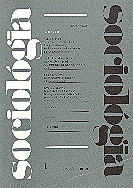Medzigeneračné rozdiely v pocite príslušnosti k "makro" sociálnym útvarom
Inter-Generation Differences In Identification With "Macro" Societal Units
Author(s): Eva Bolfíková, Miroslav FrankovskýSubject(s): Social Sciences
Published by: SAV - Slovenská akadémia vied - Sociologický ústav
Keywords: Inter-generation differences; identification; "Macro" societal units;
Summary/Abstract: Inter-Generation Differences In Identification With "Macro" Societal Units. The empirical study of social identity (realised by the Institute for Social Sciences in Košice in 1996) was based on the concept of three distinct frameworks or sources of constructing social identity: a) units of macro-societal level, b) social groups of mezzo - level and c) traits, typical behaviour and social roles in face-to-face groups. The presented findings concern the issue of social identification with the macro-societal units: municipality, region, nation, Church, professional group, country (Slovak Republic), Central Europe, Europe and Humankind. The respondents (random selected sample of 367 people) were asked to assess the importance of belonging to the macro-societal units for a) themselves, b) people of the same age as the respondents who, however, lived 20 - 30 years ago (i.e., for "past" generation) and c) for people of the same age as the respondents who will live 20 - 30 years later on (i.e., for "next" generation). We divided the sample into three age groups: the group under age of 25, the group from 26 to 50 years of age and the group above 51 years of age. The aim was to test relation between the age group and the way of assessing importance of the macro-societal units for the age group itself and for "past" and "next" generation. The presented findings demonstrate that the differences in the opinions on the identities of contemporaries, predecessors and successors were statistically more significant than the differences between the age groups of respondents. It was found that the respondents ascribed the stronger identification with "smaller" units (such as municipality and region) to "predecessors", whilst the stronger identification with larger social units (Europe) was ascribed to the successors.
Journal: Sociológia - Slovak Sociological Review
- Issue Year: 1997
- Issue No: 1
- Page Range: 55-68
- Page Count: 14
- Language: Slovak

